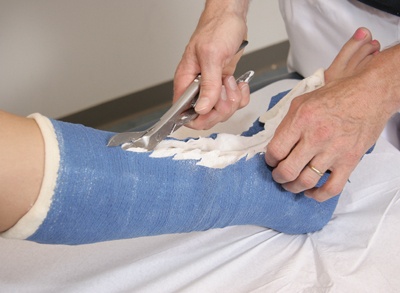What an Orthopedic Specialist Wants You to Know About Malunions

When you have a broken bone, you expect it to heal without issues, allowing you to return to your activities in a reasonable amount of recovery time. For a number of reasons, not all bones heal properly.
A complication in the healing process of a broken bone, or fracture, is referred to as a malunion. This occurs when the bone heals improperly, and in an abnormal position. This condition can cause uncomfortable and even noticeable symptoms – but often can be treated.
When A Malunion Occurs
There are several reasons why a broken bone ends up becoming a malunion. Malunions are often classified as functional or nonfunctional. Functional malunions refer to the bone not healing in the proper position, but the individual is not incapacitated. A nonfunctional malunion refers to improper position – but, the individual is not able to use the area that was affected by the break. Oftentimes, these malunions are immobile and cannot be used at all.
When a malunion exists, it may result with shortening of the limb or even an obvious deformed position of the bone. This is especially true if the malunion occurs in children when the growth plate has been damaged.
Symptoms Of A Malunion
As a bone heals in an abnormal position, there are a number of symptoms that the individual may be noticing.
- Bruising
- Discomfort
- Pain
- Reduction in function
- Swelling
If a fractured bone heals improperly, it may become twisted, bent or shorter than before the break. This may or not may not cause the type of pain that one would normally seek help for. Any unusual symptoms or appearance of a fracture should be seen by an orthopedic specialist.
 When an individual has a broken bone, they are usually anxiously awaiting cast removal. Removing a cast or other stabilizing material can cause a malunion.
When an individual has a broken bone, they are usually anxiously awaiting cast removal. Removing a cast or other stabilizing material can cause a malunion.
Malunions can also be caused by individuals who may not realized they have had a break – or by individuals who have not sought medical treatment for the fracture. Improper positioning of the fracture during treatment may also result in a malunion.
How A Malunion Is Corrected
Many malunions can be corrected by orthopedic specialists.
Depending on the amount of functioning of the bone that remains, malunions may be able to be corrected by orthopedic specialists. Surgical treatment may be indicated if the correction will result in lengthening, realignment or shortening of the fractured bone.
There are procedures where orthopedic specialists can correct or minimize the effects of a malunion. A procedure called an osteotomy, or surgical cutting of the bone, is one way that an orthopedist is able to correct the alignment of the bone and return it to its proper position. This procedure can help the bone to be more functional and mobile so the individual is able to return to their regular activities.
If you suspect that you or someone you know may have a broken bone that has not healed correctly, they should be advised to seek treatment from a qualified orthopedic specialist. Proper treatment can help them to regain mobility and lessen the pain and discomfort they may be suffering.

